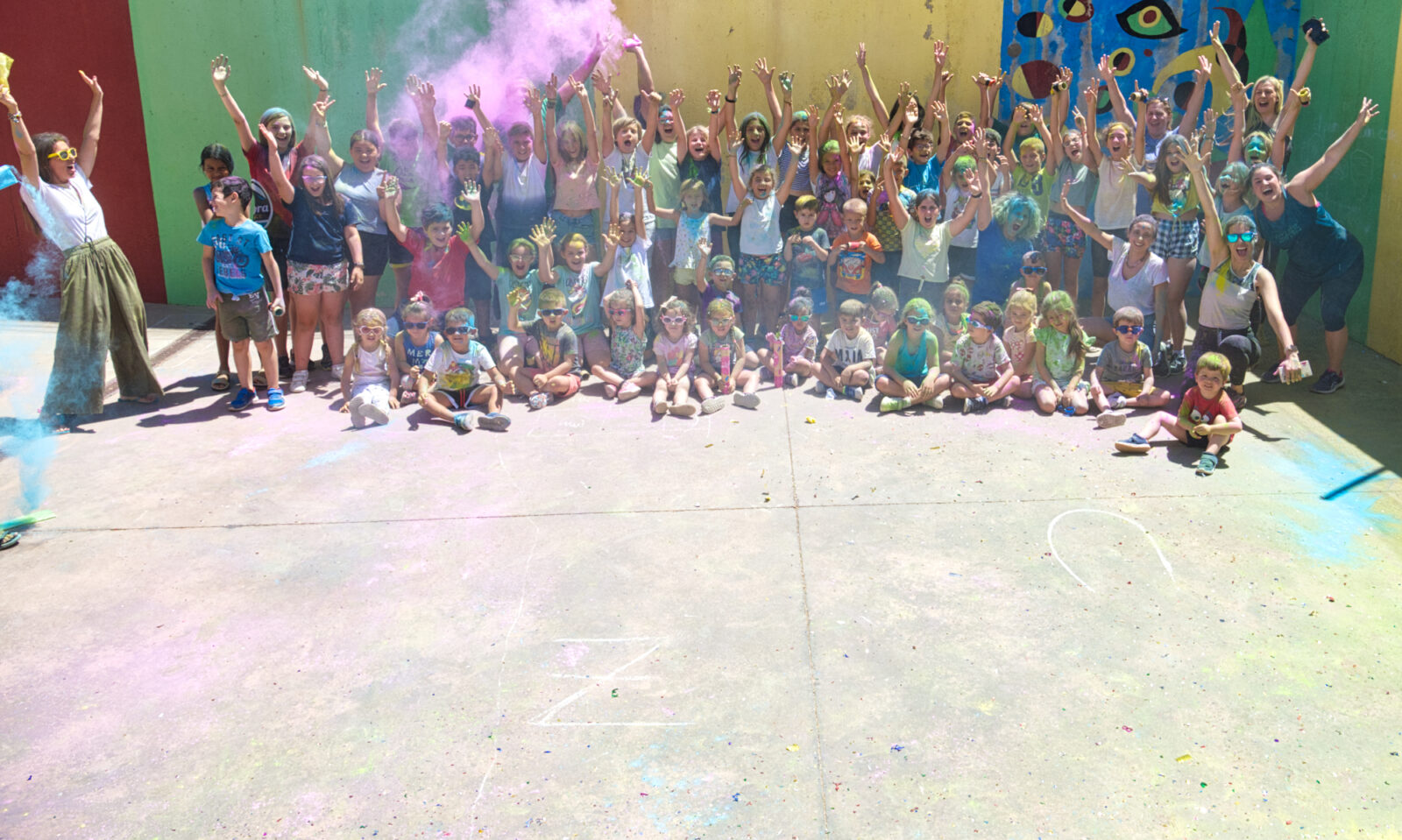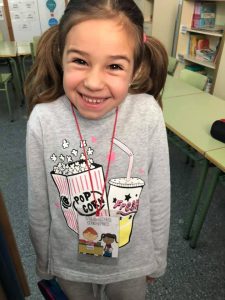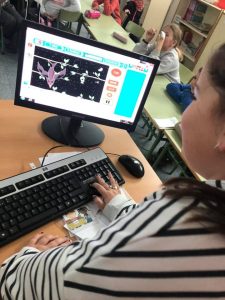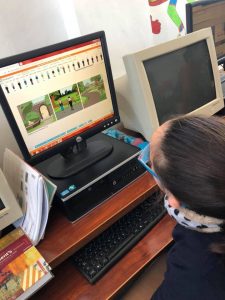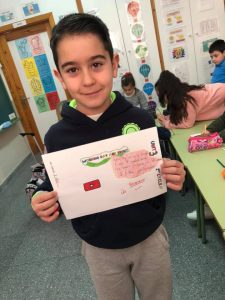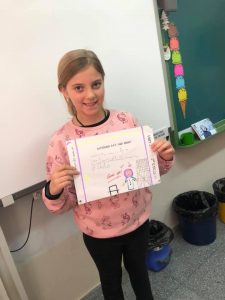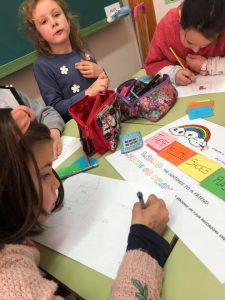¡Buenos días! Queremos daros a conocer algunas rutinas de trabajo imprescindibles en las clases de 1º y 2º de Educación Primaria en el aula de Inglés. Es fundamental que a estas edades nuestro alumnado sepa qué toca hacer en cada momento con el fin de que las sesiones se hagan amenas y divertidas. 🙂💚
Siempre comenzamos repartiendo carteles con diferentes roles que van rotando de alumnado durante la semana 👧🏼👦🏽 (“teacher helper” –> ayudante de la maestra, “peer-tutor” –> compañero tutor o “calendar manager” –> encargado del calendario). Por ejemplo:
– El encargado del calendario debe poner la fecha en inglés, recordar la estación en la que nos encontramos y elegir el tiempo que hace cada día. Además anota la fecha en la pizarra y canta nuestra rima favorita.
– El ayudante de la maestra echa una mano repartiendo o recogiendo el material de clase necesario en cada tarea.
– El compañero ayudante debe atender las dudas de los compañeros que tienen alguna dificultad en las actividades.
Posteriormente les encanta jugar con las flashcards y la patata caliente (Hot Potato) estos recursos nos permiten trabajar la expresión oral con el vocabulario más relevante de cada unidad. ¡Jugando en grupo a través de pequeños retos es más fácil aprender nuevas cosas!
Los alumnos/as 1º de Primaria están conociendo los animales domésticos y salvajes. 🐶🐱🐭🐰 Les encanta dramatizar canciones sencillas, y poco a poco se animan a cantarlas y bailarlas. Nos convertimos en animales y realizamos diferentes acciones (run, swim, jump, climb…) Nos encantan las canciones de “Super Simple Songs”, “The Kiboomers”…
Los alumnos/as de 2º de Primaria están trabajando la ropa y el tiempo atmosférico. 👚👕👖👗☀️🌤☔️ Una de las actividades que más han disfrutado es la realización de una pasarela. Siempre contamos con un alumno-coach que evalúa y refuerza positivamente a sus compañeros que hacen de modelos. Cada niño selecciona sus prendas de ropa favoritas (tarjetas grandes plastificadas) y debe desfilar y bailar en clase con ellas. Con el fin de trabajar la expresión oral deben presentarse y decir qué prendas de ropa o complementos han elegido. ¡Es una buena oportunidad para dejar la timidez a un lado! ¿Qué os parecen nuestras propuestas?
Good Morning! We want to talk to you about some essential work routines in the 1st and 2nd Primary Education classes in English sessions. It is essential that at this age our students know what they have to do at all times in order to make the sessions fun and enjoyable. 🙂💚
We always start distributing posters with different roles that rotate as students during the week 👧🏼👦🏽 (“teacher helper” –> ayudante de la maestra, “peer-tutor” –> compañero tutor or “calendar manager” –> encargado del calendario). For example:
– The boy/girl in charge of the calendar must put the date in English, remember the season we are in and choose the weather each day. Also, write the date on the blackboard and sing our favorite pointing rhyme.
– The teacher’s helper lends a hand distributing or collecting the necessary class material in each task.
– The peer-tutor must answer the doubts of the classmates who have some difficulty in the activities.
Later, they love to play with the flashcards and the “hot potato”, these resources allow us to work the oral expression with the most relevant vocabulary of each unit. Playing in groups through small challenges makes it easier to learn new things!
The students of 1st grade are learning about domestic and wild animals. 🐶🐱🐭🐰 They love to dramatise simple songs, and little by little they dare to sing and dance them. We become animals and perform different actions (run, swim, jump, climb …) We love the songs of «Super Simple Songs», «The Kiboomers» …
The students of 2nd grade are working clothes and weather. 👚👕👖👗☀️🌤☔️ One of the activities they have most enjoyed is the realization of a catwalk. We always have a student-coach who evaluates and positively reinforces his classmates who make models. Each child selects their favorite clothes (big plastic cards) and must dance in class with them. In order to work the oral expression they must present themselves and say what clothes or accessories they have chosen. It is a good opportunity to put shyness aside! What do you think of our proposals?
https://www.facebook.com/ceip.lasmellizas.9/videos/pcb.2488510874693860/2488508934694054/?type=3&theater
https://www.facebook.com/ceip.lasmellizas.9/videos/pcb.2488510874693860/2488510068027274/?type=3&theater
https://www.facebook.com/ceip.lasmellizas.9/videos/pcb.2488510874693860/2488509931360621/?type=3&theater
https://www.facebook.com/ceip.lasmellizas.9/videos/pcb.2488510874693860/2488509764693971/?type=3&theater
https://www.facebook.com/ceip.lasmellizas.9/videos/pcb.2488510874693860/2488509714693976/?type=3&theater
